While coastal communities in Norway have faced the decrease of their population, Bleik village is a particular case with a growing community. With strong traditions, festivities, and local groups. From a settlement of the iron age, a later fishing village to becoming a tourist destination; benefiting the local economy yet at the same time disturbing the local life. A Tourist Trap? imagines a future for the tourism in the village of Bleik; relying on its communal traditions and collective engagement and its relation to their natural conditions, aiming for visitor recreation and the conservation of natural areas.
Drawing upon the idea of engaging with the landscape, the path to the building comes along with several interventions spread throughout the area. Cherishing the exploration from the mountain to the sea within a moving landscape -the dunes- where interventions emerge from it, making it necessary for any visitor to explore the landscape slowly by themselves; actively engaging. Having the communal engagement as its driving point, it acknowledges and investigates the relation among people and nature, while at the same time representing the knowledge of the area. The buildings emerge from the dunes and merge with the rocks, all together forming a communal central space that serves as a gathering area for big festivities, sheltering the visitors in the open space of the dunes. The building’s program provides spaces that integrate the community’s activities with the visitor’s experiences. Exhibition spaces -guided by fishermen and storytellers of Bleik- depict folklore and scientific knowledge, educational spaces for the local Montessori school work together with the researchers and visitors. While the knowledge center conserves and investigates the collective memory that has been threatened by the passing of time. Creating awareness and an understanding of Bleik, the deep-sea canyon and its surrounding ecosystem. Embracing its myths, history and science. The Community and visitor gathering includes cooking and workspaces for the women of Bleik association -with a long tradition of cooking for all-, a cafeteria space serving the traditional delicacies for a taste experience and an extension for the traditional gatherings; merging locals with visitors.
A Tourist Trap? envisions the visitor center as a building type that no longer aims to become “the icon” for visitation. Hence it focuses on the direct integration with its context and the local residents. It aims for the coexistence of visitor recreation and conservation of natural areas; emerging as a building for the mediation of people and nature, regulating the impact of visitation and connecting nature, places and history. ¿Can we as architects help improve and project the further development of an area in a holistic intervention, projecting for the users and the ecosystem? addressing the full ecological context; the region’s culture and nature. Why is it important to avoid the creation of tourist traps -where the visitor becomes a consumer objective and the activity of visiting the place becomes a trap of souvenirs, tickets for experiences and uncontrolled infrastructure- Natural resources can be visited; enjoy and learn from them.
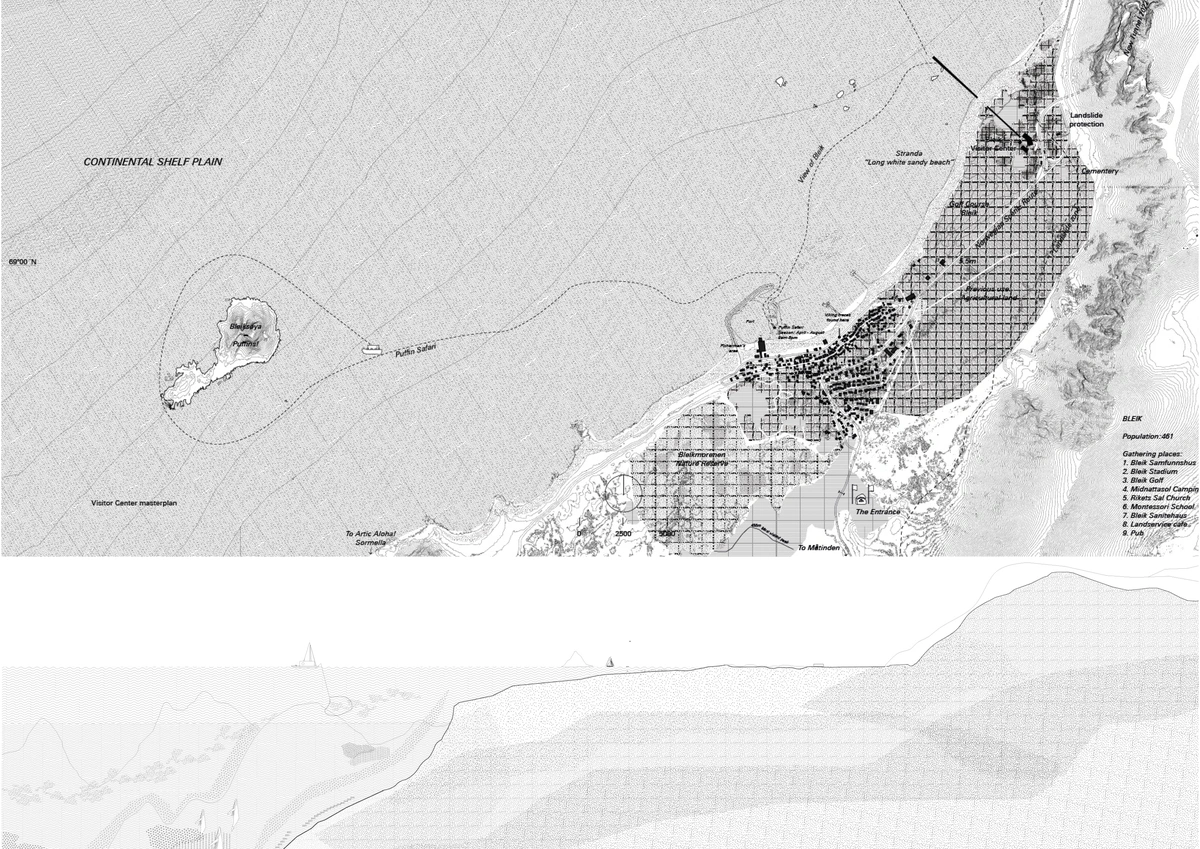
Plan and section of Bleik. The Tourist Trap? cherishes the exploration from the mountain to the sea with interventions spread throughout the area.
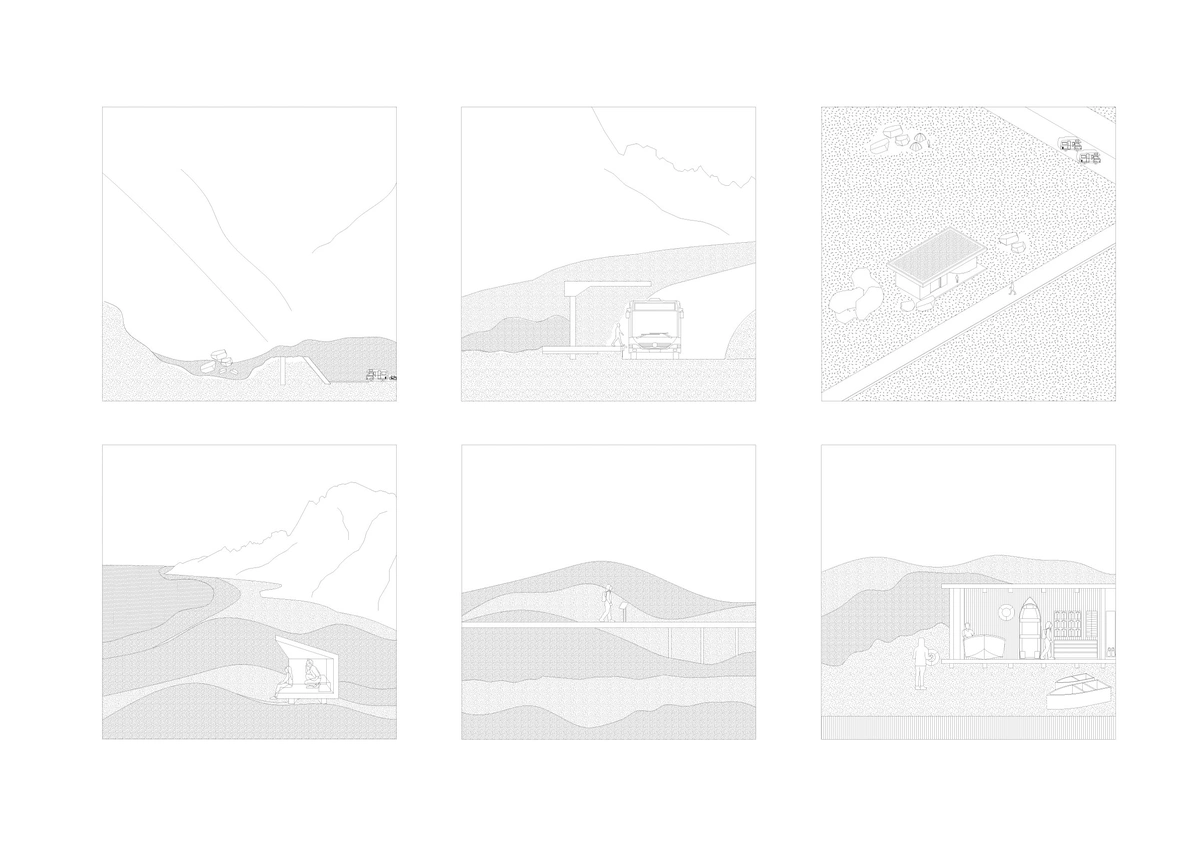
Experiences. The visitor center provides spaces that integrate the community’s activities with the visitor’s experiences
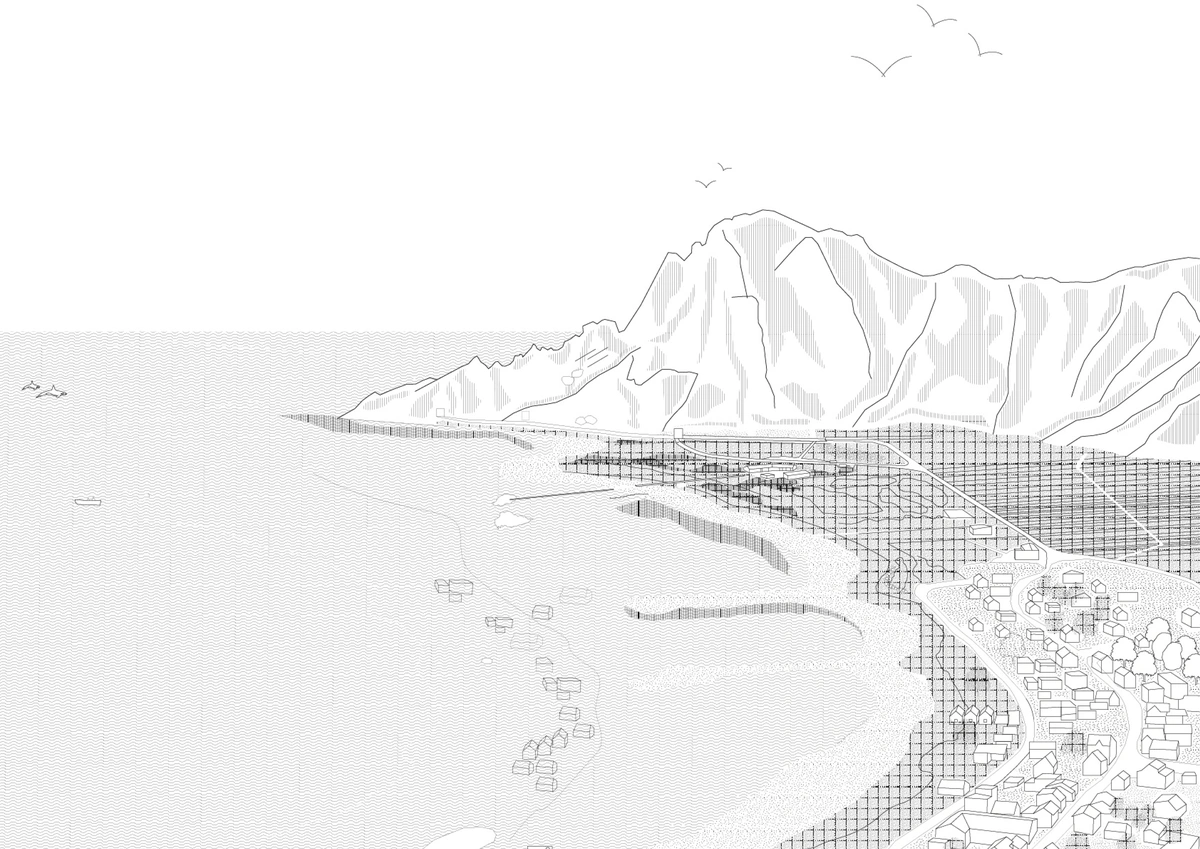
View of Bleik. From a settlement of the iron age, a later fishing village to becoming a tourist destination; benefiting the local economy yet at the same time disturbing the local life.
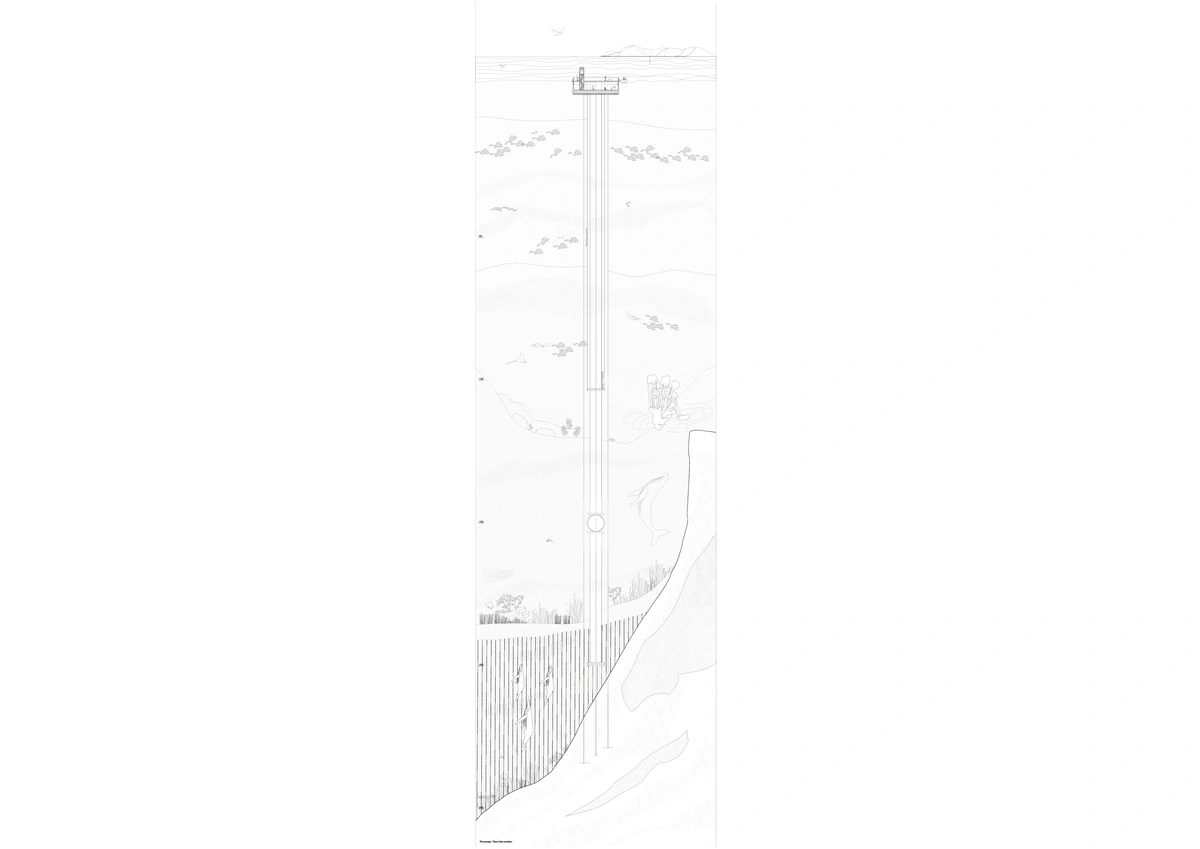
A sublime experience of the deep sea is brought by the periscope, an off-shore intervention that displays the richness of the deep-sea canyon while envisioning the constant risks of its biodiversity.
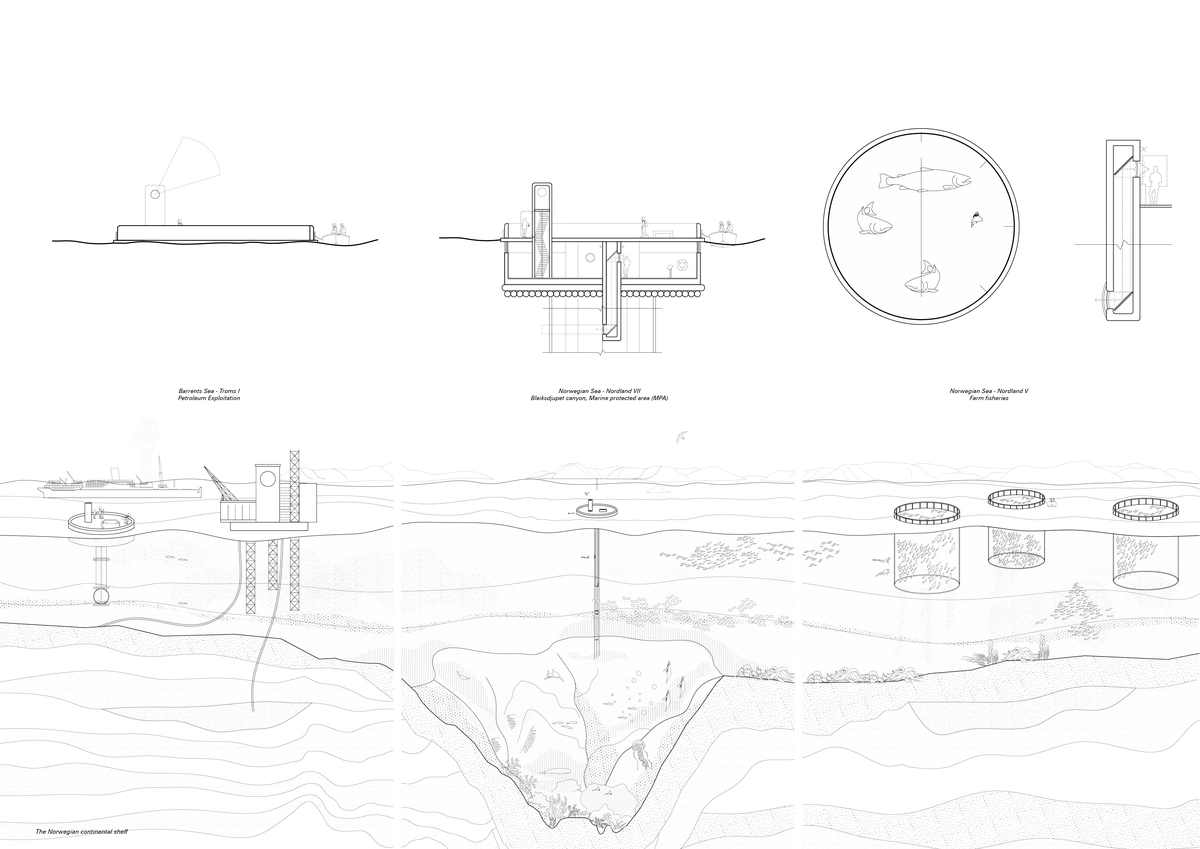
The Tourist Trap? creates awareness and an understanding of Bleik, the deep-sea canyon and its surrounding ecosystem. Embracing its myths, history and science.
Architect, urban designer and researcher based in Mexico. Architecture studies at the University
of Guadalajara, with exchange studies at L’Ecole Supérieure d’Architecture de Normandie.
Master’s degree in architecture and urban design at The Berlage Center for Advanced Studies in Architecture and Urban Design.
Her research questions the role of architectural design in the built environment focusing on urban development; it speculates on the spatial implications of tourism in coastal communities.
Finding inspiration and knowledge of various fields to achieve innovative solutions.
Professional practice in public and private architecture, urban design and competitions.
Worked at Sordo Madaleno Arquitectos developing residential and hospitality projects.
With experience developing projects from the conceptual stage to the completion of the building.
Currently developing projects in Mexico.
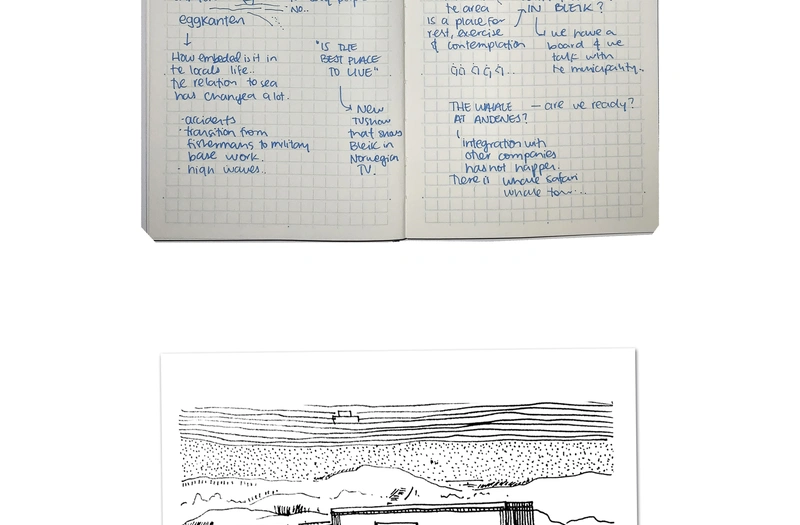
Thought process of architectural design
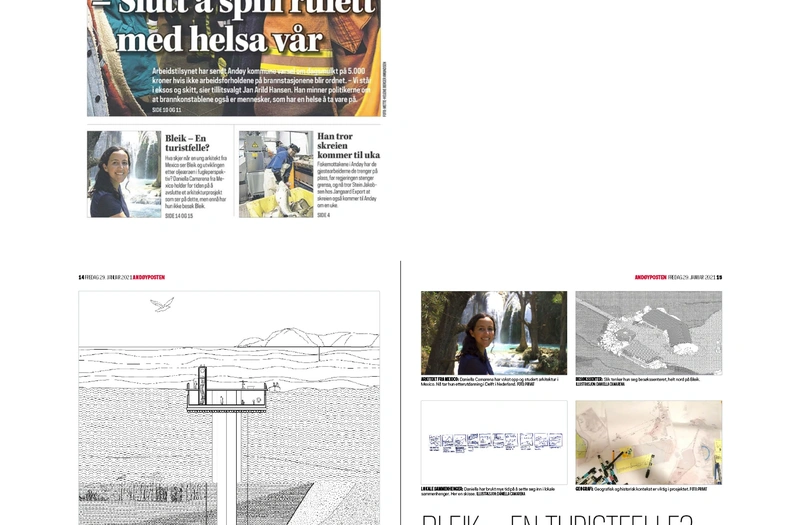
Article in the local newspaper of Andoya